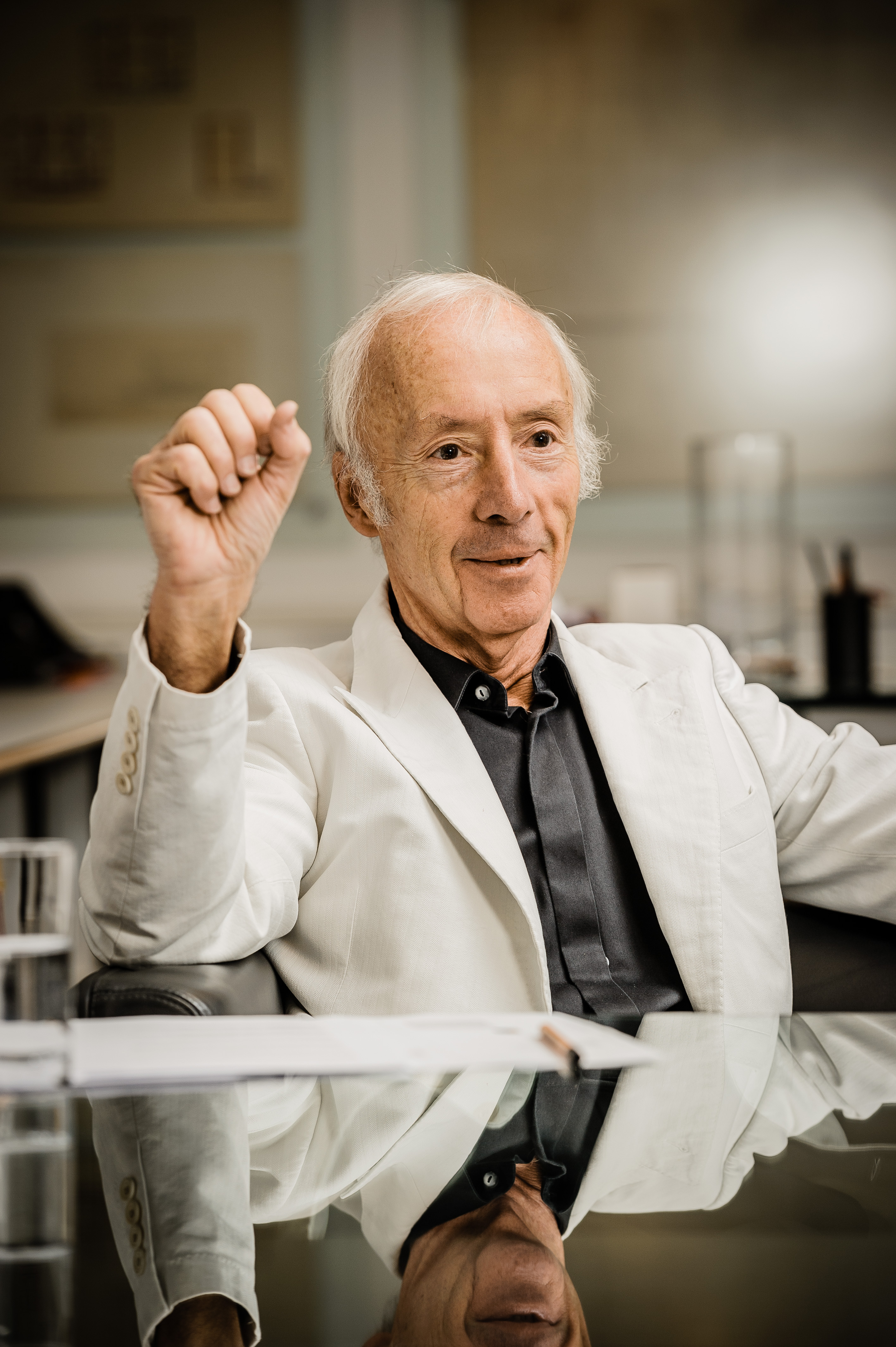On the 10th anniversary of the CITY PALACE: in conversation with architect Manfred Wehdorn
Prof. Manfred Wehdorn played a key role in renovation of the CITY PALACE, which lasted from 2008 to 2013. To mark the 10-year anniversary of the project’s completion, we talked to Viennese architect Prof. Wehdorn about the complex work involved.
Revitalization of the CITY PALACE can be considered one of Vienna’s most ambitious architectural preservation projects in recent years. For you as an architect, what was the biggest challenge?
The biggest challenge was the actual revitalization, meaning the revival of a Baroque palace for contemporary use with a number of different focuses, such as event and exhibition rooms, and office areas.
The work began in November 2008. What was your impression of the building at the time?
Quite simply: “catastrophic”. It is impossible to imagine now, but everything was drab and grey - around half the world-famous Thonet flooring had been destroyed, partly due to heavy use by previous occupants, and the valuable brocade fabrics of the wall coverings, curtains and above all the seating furniture were extensively damaged, worn and frayed. Added to this, there was very serious structural damage, and this had to be remedied before any restoration work could begin.
As is customary when preserving historical monuments, one of the precepts of restoration work is that authentic materials should be used, the aim being to preserve age value and patina. What particular examples of this come to mind?
One particularly obvious and impressive example is the richly gilded ornamentation which, with just a few exceptions, was simply in need of cleaning, and which today - after over 150 years - shines as brightly as ever, without exhibiting the garishness of complete regilding. The same can also be said of the ceiling décor, the fascinating and vivid colours of which, once revealed, needed nothing more than to be repaired by our outstanding restorers.
At peak times, over 500 people were present on the restoration site. How complex is this type of project from an architect’s point of view?
The preservation of historical monuments has always been an immense undertaking. The number you refer to (which, incidentally, only occurred on one day during the completion phase), reveals how such a complex restoration project presents a logistical challenge for planners too. Notably, the project involved up to 18 architects from our firm. From that perspective, I have always viewed our work also as a contribution to the education and training of the next generation of architects.
Another challenge arose from the need to ensure that technical installations were hidden from view to the greatest possible extent. Which installation is the most ingeniously concealed?
Anyone who visits the magnificent rooms of the Palace today can have no idea of the high standard of technical facilities hidden beneath the flooring, behind the main cornices, or indeed in many other locations. There is not a single opening in the existing building structure, including fireplaces and chimneys, that has not been used for cable routing or air intake and outflow.
What insights have you personally gained from restoration of the CITY PALACE?
The learning never stops … Again and again, we were faced with problems which could only be solved from a technical point of view, as well as in terms of restoration and economic viability, by developing entirely new approaches. Part of the reason for this was that we attempted to incorporate into the restoration the original functionality of the impressive historical technology used in the first half of the 19th century, for which the then architect, Peter Hubert Desvignes, was famous, such as automatic doors, large-scale retractable mirror panels, an “invisible” musicians’ gallery, and much else.
In April 2013 - exactly 10 years ago - the renovation work was successfully completed. Looking back, what makes you especially proud?
I’m not proud, but happy that we succeeded in forming a large collective team, and in communicating our enthusiasm to all participants, builders, technicians, and restorers. Major projects can only succeed if all participants identify with their ultimate objective. On that note, I would also like to express my sincere gratitude to the Princely Family for their enthusiasm, understanding and patronage, which formed the cornerstone of the project’s success.

Picture
Rita Newman


